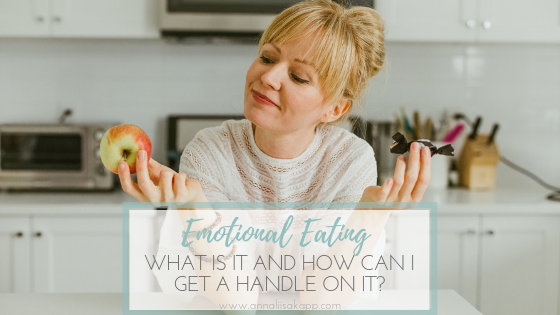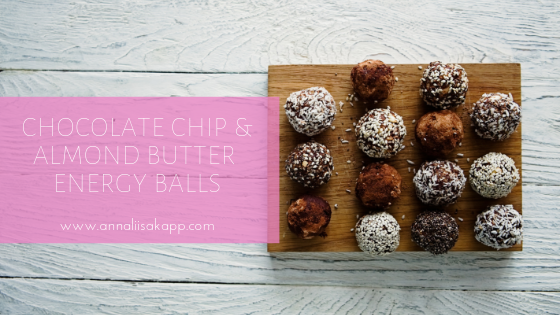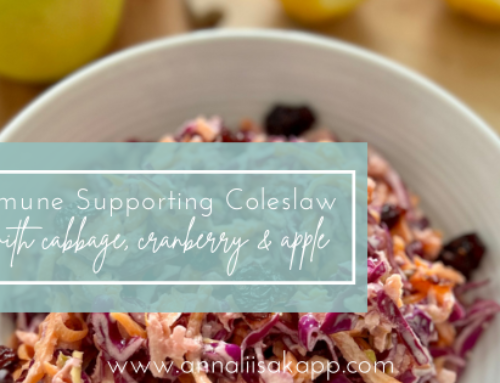
>
Picture this: You hit the snooze button one too many times, had a last minute project thrown at you at work, and then sat in an hour of evening traffic.
Finally home, you breathe a sigh of relief, head into the kitchen, and decide you deserve a snack after the day you’ve had. Maybe you reach for a few crackers, then a bit of chocolate.
Before you know it, you’ve munched your way through the entire kitchen without eating a proper meal. You’re stuffed, ashamed, and wondering what the heck just happened – WTF?!
Sound familiar?
It’s called emotional eating, and in a nutshell, it is eating for any other reason besides actual physical hunger, fuel or nourishment.
3 Trademarks of Emotional Eating
- Binging – usually on high-sugar and carbohydrate-rich comfort foods (i.e. junk food). How many people do you know who reach for avocado and apples when they’re upset?
- Mindlessly eating – you’re not aware of what or how much you’re eating or how those foods are making your body feel
- Eating to numb, soothe, please, relax, or reward self, i.e. “I had a bad day and deserve it” kind of thinking. Eating during these times provides temporary relief, but often leaves you feeling worse than where you started!
[Suggestion: insert a personal experience with emotional (over)eating, if this is something that affects you, or has affected you in the past]
The trouble with emotional eating is it overrides your body’s natural hunger cycle and can promote things like:
- weight gain
- an increase in your risk for inflammation and chronic disease
- create an unhealthy relationship between you and food
- lead to more danger types of disordered eating
What Triggers Emotional Eating?
Even though it’s called “emotional eating” because people often reach for food to cope with their feelings, there are a lot of other non-hunger reasons that can prompt you to eat.
Some common non-hunger reasons include:
- Uncomfortable emotions, like anger, guilt, fear, and sadness
- Stress
- Boredom
- Need to feel pleasure and/or comfort
If any of those scenarios sound familiar, know that you’re not alone! Emotional eating affects a lot of people at one point or another. It’s not your fault! There are so many underlying factors in place as well, like hormonal imbalances, candida overgrowth, fatigue, and all the crazy addictive stuff they put into our favourite comfort foods.
I know a big trigger for me for emotional eating is fatigue when I’ve taken on too much and haven’t prioritized my sleep. Over time, I have learned to become aware of this so when I feel myself slipping, I ask myself, am I hungry, or just tired? Do I need to cancel some meetings because I have over scheduled myself? If this is something you struggle with as well, I have some great tips for you below.
Six (6) Tips to Help You Get a Handle on Emotional Eating…for good!
- Have a non-food outlet in place to process uncomfortable feelings
- Try journaling, exercising, or talking to a trusted friend or counselor. I love making gratitude lists when I feel overwhelmed or pissed off:)
- Manage stress to the best of your ability
- This is the big one!! Exercise, meditation, deep breathing, getting enough sleep, and not taking on more than you can realistically handle can help decrease stress levels.
- Recognize boredom
- Call a friend, take a walk, pick up a book, or tackle a DIY project or hobby you’ll enjoy when you know boredom is likely to strike.
- Practice self-care
- Pamper yourself with some essential oils, a replenishing nap, or curl up with a good book – whatever makes you feel good!
- Practice mindful eating
- Avoid distractions like TV, computer screens, and phones at meals. Your focus should be on the food in front of you.
- Allow yourself to cultivate the feeling of gratitude for your food – this helps to repair an unhealthy relationship with food.
- Eat slowly, chew, and savour each bite. This helps give your body time to receive the signal from your brain when it’s full.
- Never eat out of a bag – always take out a portion of food that’s appropriate for you.
- Balance your meals.
- The majority of your diet should be nutrient-dense whole foods.
- Allow for occasional treats and indulgences so you don’t feel deprived.
- Include protein, fibre, and healthy fat at each meal to promote satiety and a stable blood sugar.
RECIPE:
These energy balls feel like an indulgent snack, but are made from whole food ingredients and contain a bit of protein, healthy fat, and fibre to keep you fuller longer.
Chocolate Chip Almond Butter Energy Balls
Ingredients
1 cup natural almond butter (or other natural nut butter)
½ cup coconut flour
½ cup dark chocolate chips
¼ cup maple syrup
Pinch of sea salt
Optional toppings – unsulfured coconut flakes, sesame seeds, chia seeds, or raw cacao powder
How to prepare
- Combine all ingredients in a medium mixing bowl, stirring until smooth. If mixture is too thick, add 1 tbsp of water at a time to help the mixture come together.
- Scoop 1 tablespoon of the mixture and use your hands to roll into a ball. If you’re using a topping, put about 2 Tbsp onto a plate, then roll your ball in it. Repeat with remaining mixture.
- Store energy balls in an airtight container in refrigerator up to 1 week. (I like to keep mine in the freezer – it’s slows down the eating and keeps the balls fresh for longer!)
Enjoy!
xx

Are sugar and carb cravings getting the best of you? Did you know that sugar cravings are more physiological than emotional? Which is great news, because that’s easier to manage.
Join us for a FREE 5 Day Sugar Freedom Challenge.
You’ll get access to amazing simple recipes to cut your cravings in just a couple of days + important resources to help you transition into living a low sugar lifestyle so you can enjoy better energy and freedom from cravings.







[…] Emotional Eating – What is it and how can I get a handle on it? < Back To Blog […]